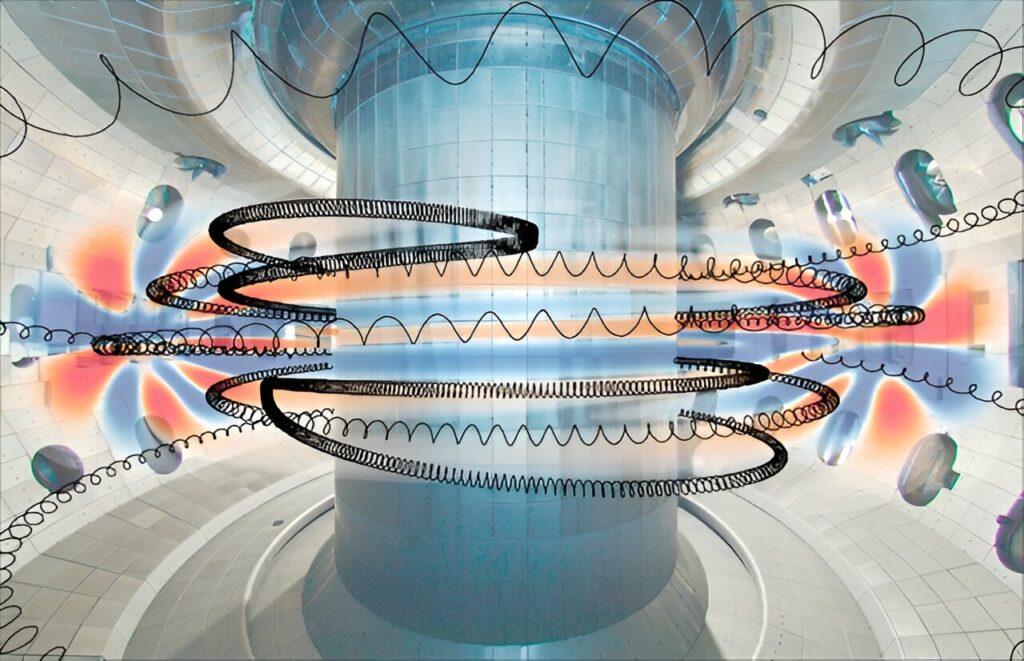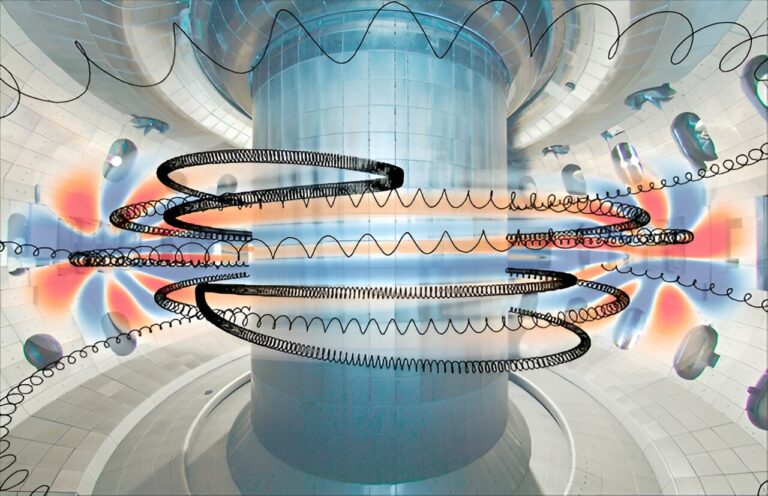Impacts Alter the Surfing Speed of Ions on Plasma Waves in Fusion Experiments and Beyond
Similar to the waves in the ocean, waves can manifest in an electrically charged gas known as plasma, consisting of electrons and ions. In ocean surfing, individuals ride boards at a speed nearly matching that of the waves, a condition referred to as resonance, facilitating efficient energy exchange between the surfer and the wave.
In the realm of plasmas, the role of surfers is played by highly speedy ions, often generated in fusion devices through fusion reactions or other heating processes applied to the plasma. In contrast to ocean surfers, these fast ions impart energy to the waves, leading to their expansion.
During the exchange of energy with the waves, the resonant particles also experience random collisions with other plasma particles. The nature and frequency of these collisions dictate the size of the waves and the degree to which particles move around. Excessive wave size or quantity can eject the surfing particles from the device, posing potential threats to the walls and diminishing the overall production of fusion energy.

To sustain the temperatures required for energy production, the plasma in fusion reactors requires continuous heating. However, the fast ions responsible for heating the plasma can resonate with the plasma waves, leading to the growth of these waves and the potential expulsion of fast ions from the device. To anticipate and address potential adverse effects, researchers must comprehend the resonant interactions between fast ions and plasma waves.
A study, recently published in Physical Review Letters, employed a combination of mathematical calculations and computer simulations to elucidate how various types of collisions vie for influence in determining the energy transfer dynamics between resonant particles and plasma waves.
This newfound comprehension is aiding researchers in devising models for maintaining plasmas at sufficiently high temperatures to sustain fusion reactions. The resonance between waves and particles in plasmas is also pertinent to certain gravitational interactions within galaxies, extending the applicability of the methods developed in this project to astrophysical research, including investigations into dark matter.
In fusion experiments, the plasma’s heat, vital for facilitating fusion reactions, is sustained by fast ions imparting their energy to the background plasma through collisions with electrons. Two distinct types of collisions come into play: diffusive scattering and convective drag. Diffusive collisions, akin to the scattering of billiard balls on a pool table, occur simultaneously with drag collisions, akin to the force experienced when extending one’s hand out the window of a moving car.
The competition between these collision types, influenced by factors such as fast ion speed and plasma temperature, determines the behavior of the fast ions. As fast ions engage in collisions that heat the background plasma, they also undergo resonant interactions with plasma waves, potentially leading to plasma cooling by sapping energy. In the absence of collisions, resonance occurs only when the particle speed precisely matches the wave speed. Traditionally, diffusive collisions have been recognized for “smearing out” the resonance, allowing efficient energy exchange even with slight speed differences between fast ions and waves.
The novel insight from this research reveals that, in the presence of drag collisions, this type of collision alters the speed at which resonance occurs, indicating that energy exchange is most effective when there is a small disparity between fast ion speed and plasma waves. This study employed a mathematical concept known as the resonance function, dependent on the difference between wave and particle speeds, to characterize the strength of the wave-particle interaction. When drag collisions significantly outnumber diffusive ones, an intriguing occurrence unfolds—entirely new speeds emerge at which efficient energy transfer becomes feasible.
This leads to the creation of new resonances, represented by additional peaks in the resonance function, expanding the scope of the resonant interaction. The resonance function, derived theoretically, governs the amplification of waves from absorbing free energy of resonant fast ions and determines the perturbation of these particles by the waves. Nonlinear computer simulations corroborated the theoretical predictions, affirming the validity of the derived resonance function across various combinations of collision types.
This advancement enhances our foundational understanding of how collisions impact resonant wave-particle interactions in plasmas. With the core theory validated, it can now be confidently applied to enhance simulation codes governing the behavior of fast ions in fusion devices, a critical step toward the realization of commercial fusion power plants.
This article is republished from PhysORG under a Creative Commons license. Read the original article.
Do not forget to share your opinion with us to provide you with the best posts !




0 Comments